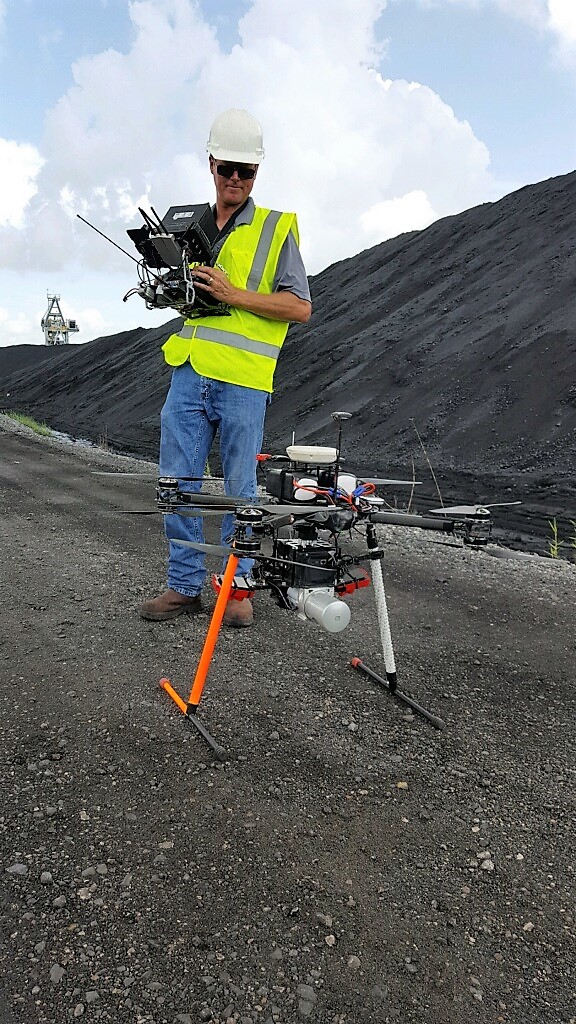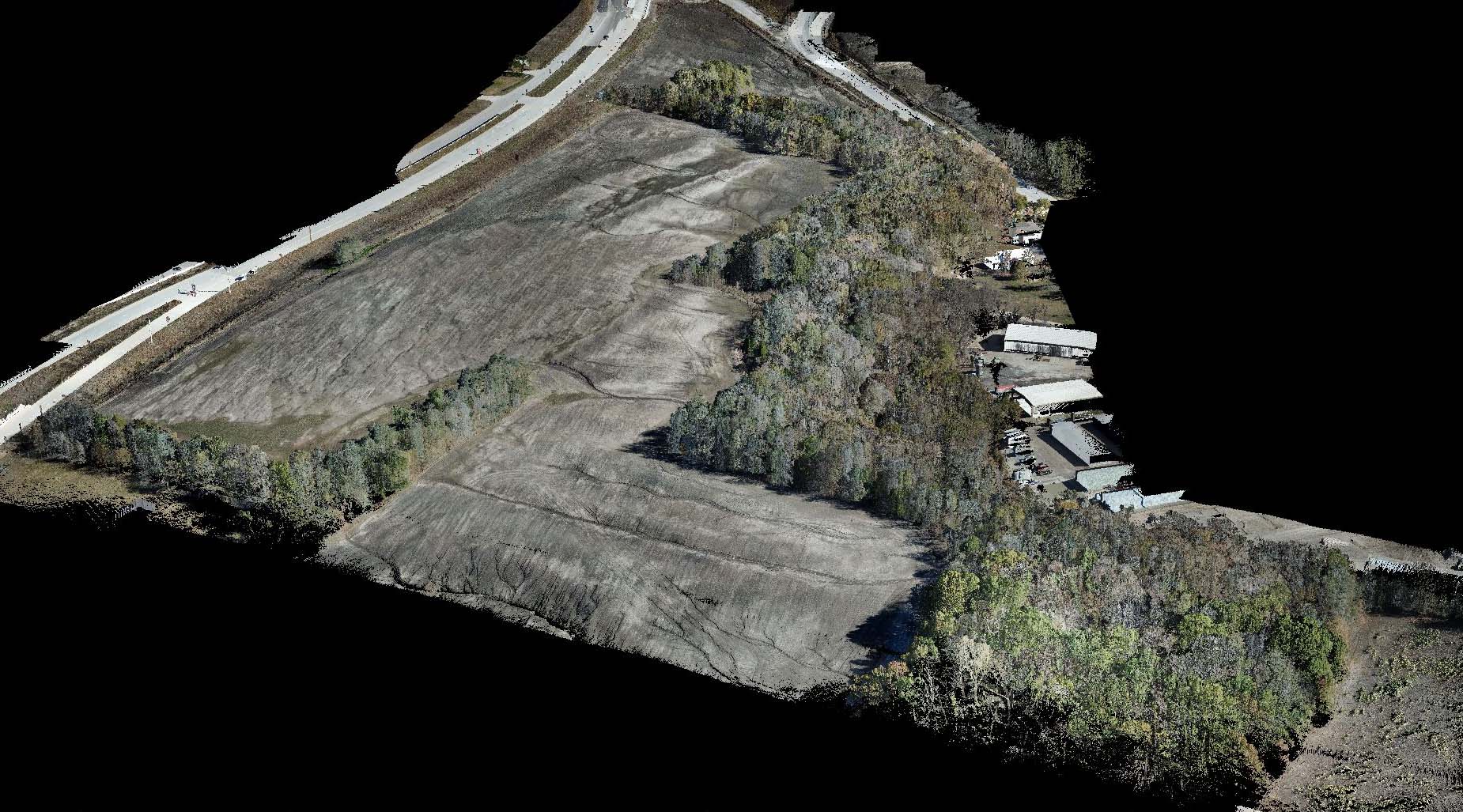Data Collection Services
Our data collection services turn days of traditional survey work into mere hours!
Proprietary surveying and inventory methods combined with custom UAV platforms provide greater accuracy and far more detail than was previously possible. The UAV platforms allow sensors and high-resolution cameras to have a vantage point to obtain the most complete information and imagery available.
The best part is that UAV-collected data is not subject to the same limitations in access as ground-based data collection services.
MEI’s Geospatial Services team partners with FAA-licensed pilots who are dedicated to applying state-of-the-art technologies in order to produce high-quality deliverables for our clients.
Our objective is simple: provide highly refined and accurate data to our clients in order to support their specific business objectives.
Power Line Engineering / NERC Compliance
The data collected from multiple sensors paints a great picture of what is actually out in the field. The combination of LiDAR and data from on-site weather stations creates a very accurate model of existing attachment heights and sag conditions of conductors.
Once this information is integrated into our PLS-CADD design software, the result is the most accurate power line engineering product at a very economical rate.
Vegetation Management
Using a combination of LiDAR, images, video and NDVI cameras, the drone team gathers the data necessary to run a highly accurate vegetation analysis.
With this data, we can determine fall-in and grow-in violations, height of vegetation, identify dead or unhealthy trees, and more.
System Mapping
With a combination of sensors, we can map or update mapping on existing power line systems.
Our techniques allow us to obtain precise coordinates of pole locations and gather asset information through images and video. The collected information can also be used to obtain communication attachment data.
Substation Surveys
By gathering data using LiDAR, FLIR, and high-resolution cameras, we are able to deliver valuable as-built information to our customers.
If you are planning a new substation, our team can gather centimeter-grade survey data to assist in site design.
Utility Structure Inspections
UAVs equipped with FLIR infrared and high-resolution imagery provide our team with the data to perform a quality visual inspection of facilities.
This approach results in a safer work environment and is completed at a lower cost than traditional means.
Communication Tower Inspections
Traditionally, towers are inspected by workers physically climbing the structures to take photos and notes.
With today’s technology, we are able to collect high-definition images and video as well as LiDAR and infrared.
This creates a much safer working environment and provides more accurate data, which can be delivered in a user-friendly viewing software.
Imagine a georeferenced map showing all tower locations, and inside each tower location, you can view and measure the most up-to-date data at each location.
Disaster Management
In the event of a disaster, MEI stands equipped and ready to help assess the situation and deliver the results in a timely manner. UAVs are capable of collecting photo/video feed and broadcasting real-time information back to a command center. This helps expedite the remediation process, as well as provide information for media outlets and critical insurance documentation.
McCord Engineering’s UAV Program was originally developed for our in-house engineering needs as well as a service to our existing clients in the electric utility industry.
Our core business remains focused on serving the interests of our utility clients. UAVs and the sensors mounted on them also produce a great product for a number of other applications including:
- Proposed Corridor Surveys
- Pipeline Right-Of-Way Inspections
- Photo/Video Shoots
- Construction Site Inspections
- Insurance Inspections
- Volumetric Surveys
- Topographic Surveys
- As-Built Surveys

Drone LiDAR Octo-Quad Rural Distribution
Using an unmanned aerial vehicle (UAV) platform for data collection sensors and high-resolution cameras provides a vantage point for the most complete information and imagery available.
UAV data collection is not subject to the same access limitations as ground-based data collection. Data that once took days to obtain through traditional survey and inventory methods can be gathered in a matter of hours – with greater accuracy and far more detail!
UAV Sensors
LiDAR
- 700,000 measurements/second
- Highly accurate 3D data for any measurement or analytical need
- For tough or large surveying areas, under trees, along bodies of water
FLIR Infrared
- Radiometric data for post-processing
- Geotagged thermal inspections
- Infrared mosaics of buildings
4K Video
- Inspections
- Live Viewing
High Resolution Still Cameras
- Geotagged for inspections
- Mosaics
Normalized Difference Vegetation Index (NDVI)
- Vegetation analysis and vegetation management
- Creating mosaics and colorizing LiDAR
In most cases, all it takes is one flight to capture the data as the sensors can collect data simultaneously. This creates a series of data that can be used for many different applications. For more information on our unmanned aerial vehicle services click here.
Our team is skilled at determining the which data collection method will deliver the most accurate product at the lowest cost to our clients.
Data collection methods:
- Unmanned Aerial Vehicle (Drone)
- Terrestrial LiDAR (Vehicular/Pedestrian)
- Stationary LiDAR
With drone surveying, McCord Engineering can collect high-density LiDAR data used to create a 3D model.
Data can be delivered to you in the form of topographical maps, point clouds, cross sections and mosaics, and in a variety of file formats. This is especially helpful in hard-to-reach locations.
Workflow:
- Define Job Area (KMZ files)
- Define Deliverables
- Point cloud
- DTM
- Mosaic
- Topography
- Cross-Sections
- Confirm Property Permissions
- Check for COA Requirements
- Plan Mission
- Set Ground Control
- Fly Property
- Process Data
- Deliverables
- **Request Feedback to Refine Deliverables
We use high-resolution digital cameras for photogrammetry and have a high-quality LiDAR. Either of these technologies can provide accurate 3D measurements of the surroundings you need mapped.
When we are finished, you will receive a full map, measurements of objects specified, and any files we created in collecting your data.
Call us for more information and a demo of our data.
- Low-cost data collection
- High-density point clouds
- Drone point clouds allow for:
- All-inclusive orthomosaic of work area
- Fewer manual surveying points
- Precise measure of specific points
In addition, drone data allows for:
- Topographical mapping
- Watershed & flood analysis
- More precise line work for engineers
Drone surveying flyovers can help surveyors more precisely measure elements that conventional surveying wouldn’t pick up without many hours of field labor. This increased efficiency can reduce costs spent on equipment and man-hours.
Drone LiDAR strengths?
We can fly over hard-to-reach locations and areas of heavy road traffic. We can help small companies obtain large projects and any company can use us for smaller areas. We can also penetrate heavy tree canopies, finding ground points in otherwise impossible to reach locations.
Drone LiDAR weaknesses?
Our LiDAR doesn’t penetrate water and it can’t map items buried underground.
What kind of density can we produce?
We collect 700,000 shots/sec. That produces a point density of 500 points per square meter, or 50 points per square foot.
What is our accuracy?
We have a 2 cm horizontal and 5 cm vertical accuracy. Total volumetric accuracy is within 3%.
How do you keep the accuracy?
With LiDAR or photogrammetry, we use ground control points for absolute point cloud positioning (we make sure the data matches your specs).
How do you check accuracy?
In addition to ground control points, we use visual landmarks and other known “check points” to verify accuracy within the point cloud.
Are Drones legal to use in commercial business?
The rules relative to drones in commercial business are changing on a regular basis. As of the start of 2017, you can operate drones for business if you have:
- An FAA Exemption 333 or Part 107 license
- A registered “N-numbered” aircraft
- Appropriate COA, certificate of authorization for your flying location
- Permission from the owner or authorized agent of the property
Drones can be operated in most locations with what is called a “Blanket COA”. This COA is part of the 107 license. Some areas, such as close to airports require special authorization from the FAA. This authorization can take from a few days to a few weeks depending on the specific location.
There are many more details relating to the legal and safe operation of drones in US Airspace. We can provide more details upon request. The most important detail is it is completely legal to operate when you follow the appropriate FAA regulations.
Safety?
Our UAV partners operate with an authorized pilot and an observer. If the job warrants, we add extra crew members to keep needed areas clear and safe for flight.
The aircraft is equipped with several safety features in the case of technical issues during a mission.

McCord Data Collection Services – Safety and Volumetrics
We can supply further details upon request.
Liability?
MEI carries at least $2 million in liability insurance. If your company requires a specific level of insurance coverage we can make sure to match or exceed that level before starting work.
For more information about Data Collection, contact Rex Woods.
What Our Clients Have to Say…
McCord Engineering started providing work order inspections prior to 1989 and our relationship with McCord Engineering has grown to being our main engineering firm doing two year and long range work plans, sectionalizing studies, designing and inspection of transmission upgrades, and designing distribution work plan projects. We have found McCord Engineering to be very competent and innovative group using the latest technology such as lidar drones to survey and design distribution lines and assist us with any needs.
Clayton Stanford
Engineering Director
San Bernard Electric Co-op
McCord Engineering is one of the most innovative, forward looking, and technologically advanced consultants Mid-South Synergy have had the privilege to work with. We are proud to have them work with us on our Vegetation Management program using LIDAR and multispectral imagery, an approach that has changed the way we do vegetation management and has the potential to change the utility industry as a whole….
Dr. Comfort Manyame
GISP
MidSouth Synergy
McCord has provided Engineering services to the City of Georgetown since 1988. They are reliable, accurate, and responsive to all our needs and willing to go the extra mile in our behalf.
Jimmy L. Sikes
Electric Engineering Manager
Georgetown Utility Systems/Electric Division
McCord Engineering has been a tremendous resource for CoServ Electric since 1996. When we work with McCord, we are collaborating with engineering experts who are extremely knowledgeable, reliable and responsive to our needs and those of our Members. They consistently use cutting-edge technology and innovative practices to provide a quality product that is complete and efficient. Our track record with them is excellent, and they always commit the resources, time and talent to make our relationship a win-win.
Chris Skidmore
Manager of Major Designs and Standards | Engineering Services
Office Locations
College Station
(Headquarters)
916 Southwest Parkway East
College Station, TX 77840





